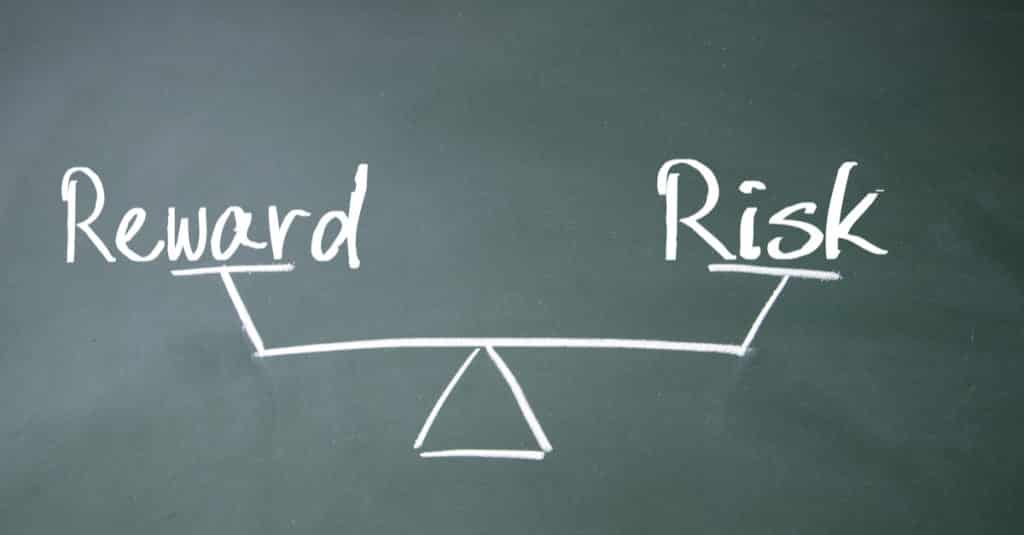How We Process Risk — and How This Affects Investing Decisions
When it comes to investing, there’s a direct relationship between risk and reward. In other words, the more risk you’re willing to assume in the form of lost money, the higher your potential reward (or return) might be. Conversely, the lower your risk tolerance, the lower your potential reward might be.
This is pretty intuitive to most people. But it’s worth pointing out within the context of examining how human beings process risk and what the implications of this are with regard to making investing decisions.
Loss Aversion and Investing
Research has shown that in general, most people have a loss aversion with respect to investing. That is, this cognitive bias means their fear of losing money is generally greater than their excitement about the possibility of earning money.
Consider a simple coin toss game in which there’s a 50-50 chance of winning. If given the opportunity to win $100 on an investment of $100, most people will decline to play. The reward for winning must be higher than the amount that could be lost because losing has a greater emotional impact than winning. In fact, research has shown that it takes a gain of double the potential loss for most people to play the game. Applying that research to this specific example, to entice a majority of people to play, you’d need to offer even odds that someone betting $100 could win $200[1].
There’s a parallel when it comes to investing in the stock market. Data reveals that the longer someone is invested in the stock market, the lower the probability of loss. On average, bull markets last 7.5 years and offer a total upside return of nearly 400%. In contrast, bear markets last an average of 1.5 years and feature a downside risk of about 40%. So while the data strongly favors investing in the stock market for long-term investors, risk aversion leads many to play it safe and avoid stock market investing.
Use the Right Decision Making System
Another psychological theory proposed by Nobel Prize winning psychologist and economist Daniel Kahneman helps explain the risk aversion faced by many investors. According to Kahneman, there are two main systems used by humans to make decisions. The first system is instinctive — it’s the “fight or flight” reaction we feel in the face of immediate danger. While this system is effective in helping us survive dangerous situations, it doesn’t do a good job of assessing the true risk of any particular situation.
For example, some people are scared of sharks when they wade into the ocean or are fearful of flying in an airplane — even though the risk of dying from a shark attack or plane crash is infinitesimal. In other words, the brain is using system 1 to assess the risk of danger even though the statistical probability of this event is practically zero.
Market crashes are kind of like shark attacks and plane crashes. Sure, they happen, but long-term market declines are historically very rare and markets have always rebounded in the long run. The problem is that some investors allow system 1 thinking to override a more rational investing decision making process — especially when markets are volatile like they have been recently.
A Few Takeaways
Here are three lessons we can take away from these observations about investing and risk:
1. Stay focused on the long term. Loss aversion is understandable. Having enough money gives most people a strong sense of security so they’re hesitant to put this at risk. However, if you have a long-term time horizon for your investments — such as 10 to 20 years or longer — you can generally afford to assume more risk and weather market downturns in exchange for potentially higher returns. The amount of risk you take is particularly salient now given how low interest rates currently are.
2. Keep potential worst-case scenarios in the proper perspective. The market drop that occurred in the spring due to the COVID-19 pandemic provided us with an up-close and personal look at a true market crash. But even this worst-case scenario quickly righted itself with stock market indices bouncing back relatively quickly. Investors who panicked and sold back in March and April have missed out on the strong rebound. While recoveries in past crises like the Great Depression and the Financial Crisis of 2008-2009 were more protracted, market did ultimately recover and go on to notch new highs.
3. Gauge both your risk profile and your capacity for loss. These may sound similar but they’re very different. Your risk profile is your psychological willingness to assume a certain degree of risk with your investments. Conversely, your capacity for loss is your financial ability to absorb losses in your investment portfolio. The former is a personality trait — you’re hard-wired to either assume or avoid risk. However, the latter is based on your actual circumstances: you need to know the level of losses you can absorb and still remain on track financially.
It’s important to understand how the processing of risk by human beings affects investment decisions and, ultimately, financial health and well-being. Keep these lessons in mind as you formulate your investing strategies going forward.
[1] Clearly, not everyone is this risk averse — for evidence of that, just look to the Vegas skyline.



